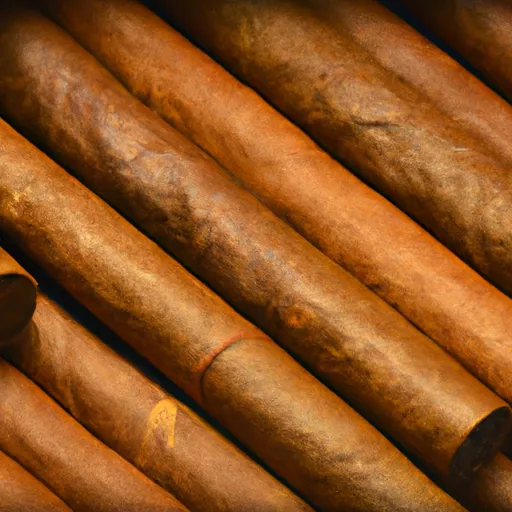
When you think of cigars, you might envision a luxurious and expensive symbol of sophistication and class. However, there is a more accessible and affordable alternative to traditional cigars – little cigars.
As the name suggests, little cigars are smaller versions of traditional cigars. They are made from the same tobacco leaves and are rolled in a similar way, but they differ in size and shape. Little cigars typically measure around 3 inches in length with a thinner ring gauge, making them closer in size to cigarettes. However, don’t let their size fool you – little cigars pack just as much flavor and quality as their larger counterparts.
Growing up, I was always intrigued by the world of cigars but never had the means or desire to indulge in the expensive hobby. That is until I discovered little cigars. They offered me an affordable way to experience the enjoyment of a cigar without breaking the bank. In this article, I will delve deeper into the world of little cigars and share my experiences and knowledge with you.
History of Little Cigars
The origins of little cigars can be traced back to the late 19th century when small cigars were referred to as “stogies.” They were originally made in Pennsylvania and were made with leftover tobacco from larger cigars. These small cigars were popular among factory workers and men who couldn’t afford expensive cigars. Over time, the term stogies evolved to refer to cheap or low-quality cigars.
The term “little cigar” became more popular in the 20th century as manufacturers began to produce smaller versions of premium cigars. In the 1960s, the Dutch company Henri Wintermans introduced the first international brand of little cigars, Bandidos. This marked the beginning of the global popularity of little cigars.
Today, little cigars are produced all over the world and have gained a dedicated following among smokers who enjoy their convenience and affordability.
Types of Little Cigars
There are two main types of little cigars – filtered and unfiltered. Filtered little cigars come with a tiny plastic or paper filter at the end, similar to cigarettes. These filters are designed to reduce the amount of tar and nicotine, making them a milder option for smokers. On the other hand, unfiltered little cigars offer a more authentic and intense smoking experience.
Little cigars also come in a variety of flavors, such as vanilla, cherry, and chocolate. These flavors are added during the manufacturing process, giving the cigars a hint of sweetness and making them more appealing to those who prefer a milder taste.
Benefits of Little Cigars
One of the major benefits of little cigars is their affordability. While a premium cigar can cost anywhere from $10 to hundreds of dollars, little cigars typically range from $1 to $5. This makes them an excellent option for smokers on a budget.
Little cigars are also more accessible and convenient than traditional cigars. They are sold in most convenience stores, gas stations, and online, making it easier for smokers to purchase them. Their compact size also makes them a suitable option for on-the-go smoking.
Another advantage of little cigars is their quicker and milder smoking experience. Traditional cigars can take anywhere from 30 minutes to an hour to smoke, while little cigars can be enjoyed in under 15 minutes. This makes them a great choice for those who don’t have a lot of time on their hands but still want to indulge in a cigar.
Smoking Experience
Smoking a little cigar is a unique experience that combines the flavors of a cigar with the convenience and milder taste of a cigarette. Lighting a little cigar is similar to lighting a traditional cigar – you want to make sure the cigar is evenly lit to ensure a consistent and enjoyable smoking experience.
Upon taking the first puff, I noticed the classic tobacco taste blended with a subtle hint of my chosen flavor – vanilla. The smoke was smooth and didn’t have the harshness of a cigarette. The flavor was present throughout the entire cigar, and I was surprised by how much I enjoyed it.
One aspect of little cigars that some may see as a downside is the shorter smoking time. I personally enjoyed the fact that I could indulge in a cigar without having to invest a significant amount of time, but others may prefer a longer smoking experience.
Tips for Beginners
If you are new to the world of little cigars, here are a few tips that may come in handy:
1. Start with a milder flavor: If you are unsure of which flavor to try, I suggest starting with a milder one such as vanilla or cherry. These flavors are not too overpowering and will give you a good idea of the overall taste of little cigars.
2. Experiment with different brands: Just like traditional cigars, little cigars come in different brands and blends. Don’t be afraid to try different ones to find your favorite.
3. Don’t inhale the smoke: Unlike cigarettes, cigars are not meant to be inhaled. Instead, savor the smoke in your mouth for a few seconds to experience the full range of flavors.
4. Invest in a cutter: While little cigars are small, they still need to be cut before smoking. Investing in a cigar cutter will ensure a clean and even cut, resulting in a better smoking experience.
Final Thoughts
Little cigars may not have the same prestige and luxury as traditional cigars, but they offer a more accessible and affordable way to indulge in a cigar. Whether you are a beginner or a seasoned smoker, little cigars have something to offer for everyone. So the next time you want to experience the world of cigars, give little cigars a try, and I guarantee you won’t be disappointed.